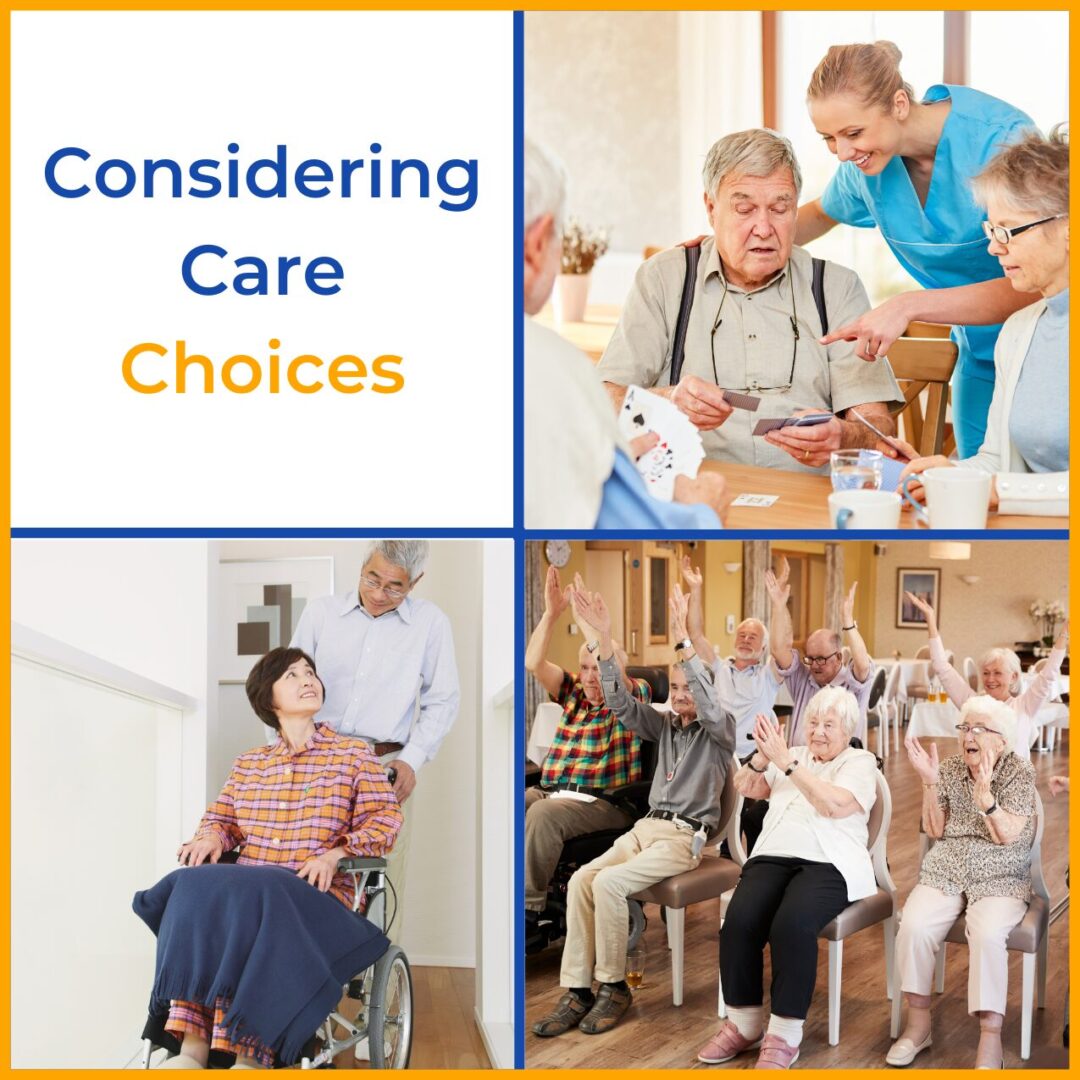As caregivers for our loved ones with Alzheimer’s and other types of dementia, we often face the challenging question: “Is it time to change my care receiver’s living situation?” We are Nancy Treaster and Sue Ryan, and through our experiences, we’ve developed five essential tips to help you navigate this complex decision-making process.
Understanding the Decision-Making Framework
Before diving into our tips, it’s important to understand this isn’t a one-time decision. It’s an ongoing process of evaluation and adjustment. Key points to consider:
- Multiple Inflection Points: The need for reevaluation comes from a variety of places such as changes in medication, shifts in diagnosis, safety concerns.
- Early Preparation: Don’t wait until you need an immediate answer!
- Collaborative Decision-Making: It’s helpful to have support making these decisions.
- Continuous Assessment: Regularly evaluate and adjust your approach.
Let’s explore our five key tips for evaluating living situations.
Tip 1 – Understand Your Financial Resources
This foundational step requires a thorough assessment of both current and future financial resources.
- Professional Resources to Consult:
- Financial advisors (especially those specializing in senior care)
- Elder care attorneys
- Government program specialists
2. Income Sources to Consider:
- Care receiver’s savings
- Pensions
- Long-term care insurance
- Public health insurance (Medicaid in the US)
- Social Security disability benefits
- Family contributions
3. Expenses to Evaluate:
- Home modifications
- Safety adjustments
- In-home caregiving costs
- Day program fees
- Potential lost income if reducing work hours or stopping work
- Care community costs
Nancy’s Experience:
“I had to transition to part-time work for about two and a half years before eventually retiring completely to focus on my husband’s care. The impact on income needs to be carefully considered in your planning.”
Tip 2 – Research Care Options
There are three main categories of care options to evaluate:
- Non-Residential Options:
- Day programs
- Respite programs
- Memory cafes
Sue’s Experience:
“I used day programs in two ways: first to evaluate how my husband would do in that type of setting, and second to test different care communities by having him participate in their day programs. The difference in his response between two communities I evaluated was night and day.”
2. In-Home Options:
- Professional caregiving services
- Government programs (VA benefits, Medicaid services)
- Family caregiver arrangements
Nancy’s Experience:
“For my father-in-law, we accessed VA healthcare benefits which provided four hours of in-home care four days a week at no cost to us. These types of programs can be invaluable resources.”
3. Care Communities:
- Memory care specific communities
- Communities with memory care units
- Different care models
- Staffing levels and roles
- Waiting list considerations
- Financial models
Tip 3 – Assess Home Safety
This evaluation should include multiple perspectives:
- Medical Assessment:
- Get an updated medical evaluation
- Discuss current and future safety risks
- Request occupational therapy assessment
2. Key Safety Considerations:
- Wandering risk
- Cabinet and door safety
- Mobility challenges
- Fall prevention
- Depth perception issues
- Stairs and accessibility
- Emergency services access
Sue’s Experience:
“Living in a two-story condo became a critical inflection point. The stairs became unsafe due to depth perception issues, and the elevator caused anxiety. Emergency services access was also a major concern.”
Tip 4 – Evaluate Medical Needs
- Current and Future Medical Considerations:
- Impact of multiple diagnoses
- Care complexity
- Required medical procedures
- Medication management
- Physical care requirements
Nancy’s Experience:
“When my father-in-law needed a Foley catheter, it became an immediate inflection point. His dementia made it unsafe for him to have the catheter without 24-hour care, requiring us to evaluate our care decisions.”
Tip 5 – Prioritize Wellbeing for Both Care Receiver and Caregiver
This final tip focuses on quality of life considerations for everyone involved.
- Socialization Needs:
- Care receiver’s social preferences
- Community engagement opportunities
- Caregiver isolation prevention
- Balance of stimulation and comfort
Sue’s Experience:
“Each person’s social needs are different. My grandmother preferred quiet environments, while my husband was very social. Understanding these preferences helped guide our living situation decisions.”
2. Safety and Emotional Considerations:
- Physical safety for both parties
- Emotional wellbeing
- Caregiver burnout prevention
- Managing aggressive behaviors
- Personal boundaries
3. Making Your Decision:
- Stay connected with potential care communities
- Review all of your evaluation considerations
- Involve family members
- Consult with professionals (e.g.: financial, legal)
- Reevaluate available care options
- Be emotionally prepared to make your decision
- Have a plan in place to support immediate action if needed
Final Thoughts
This is a continuous evaluation process, not a one-time decision. Keep these key points in mind:
1. Start early with research and planning.
2. Consider both care receiver and caregiver needs.
3. Work with professional advisors, especially elder care attorneys.
4. Maintain relationships with potential care communities.
5. Stay flexible. Review and adjust plans as needs change.
If you have tips about evaluating living situations, please share them on our Facebook page or Instagram page.
We’re all on this journey together.






Join the community